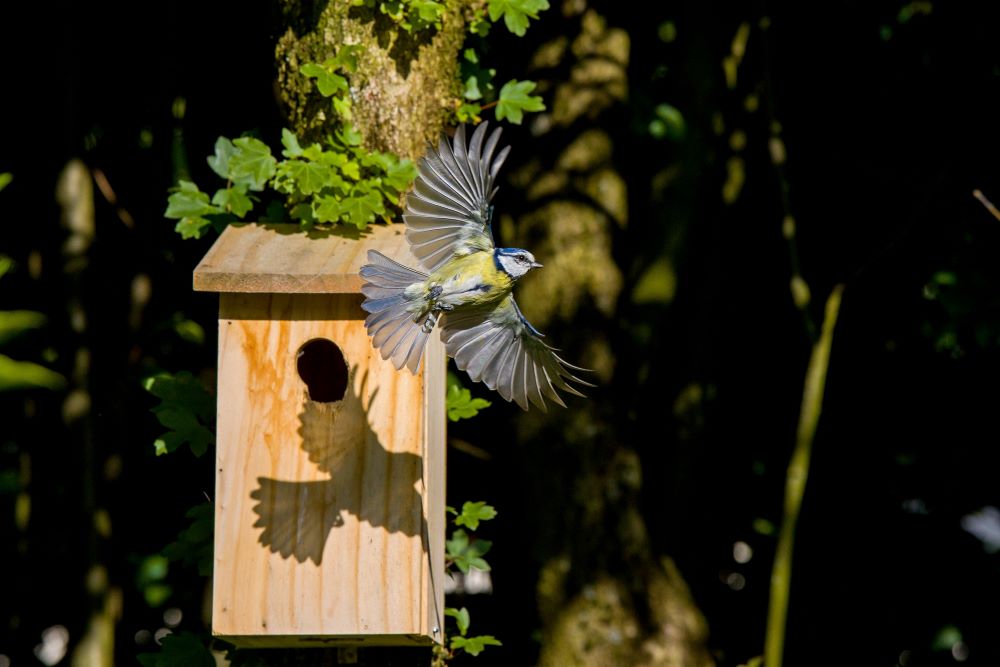From £6.99

Perfect Nest Box Placement: Enhance Your Garden This Nest Box Week
Nest Box Week is a significant event in the UK calendar, dedicated to encouraging the public to install nest boxes in their gardens, parks, and community spaces. Occurring every February, this initiative aims to address the decline in natural nesting sites by promoting the provision of secure and suitable homes for birds. For those who appreciate the beauty and importance of avian species, this week serves as a call to action to support and nurture local bird populations.
Nest Box Week, established by the British Trust for Ornithology, not only raises awareness about the challenges birds face but also offers practical solutions that everyone can implement. Whether you're new to birdwatching or a seasoned enthusiast, participating in this event provides an excellent opportunity to make a tangible difference.
By installing nest boxes, you offer birds a place to breed and raise their young safely, away from the threats posed by modern developments and habitat loss. This effort not only benefits the birds but also enriches your own experience of nature, bringing the sights and sounds of a thriving bird population closer to home.
In joining this national movement, you contribute to a larger effort to protect and sustain our wildlife, ensuring that future generations can enjoy the same natural wonders we do today.
Benefits of Proper Nest Box Placement
The proper positioning of a nest box plays a crucial role in its success. By situating it correctly, you not only increase the likelihood of attracting birds but also support their breeding and survival. A well-placed nest box provides a secure and sheltered environment, protecting its inhabitants from predators and harsh weather conditions. This is particularly important as natural nesting sites become scarcer due to urbanisation and habitat destruction.
When deciding how to site a nest box, consider factors such as height, orientation, and proximity to food sources. Placing it at an appropriate height reduces the risk of predation, while facing it away from prevailing winds and strong sunlight ensures a more comfortable and safe environment for the birds. Moreover, situating the nest box away from bird feeders can help minimise competition and disturbance, creating a more serene nesting area.
In addition to providing birds with a safe place to raise their young, correct nest box placement can enrich your garden's ecosystem. Birds play a pivotal role in controlling pests and pollinating plants, contributing to a healthier and more balanced environment. By paying attention to these details, you create a haven that supports both avian life and your garden's overall wellbeing.
Tips for Placing Your Nest Box
To optimise the success of your nest box, select a location that offers protection from prevailing winds and direct sunlight. North to east-facing positions are ideal to shield the box from harsh weather conditions. Position the nest box between two to four metres above ground level to deter predators and provide a safe breeding environment. Ensure that the entrance hole is unobstructed to allow easy access for birds. Additionally, placing the nest box away from feeders reduces competition and disturbances, creating a more tranquil nesting area. Following these guidelines helps you create a welcoming and secure habitat for your avian visitors.
Our Exclusive Offers for Nest Box Week
To mark Nest Box Week 2025, we are excited to present exclusive discounts on a variety of nest boxes and wildlife products. Whether you favour the charm of a classic wooden nest box or the sleekness of a modern design, our collection caters to all tastes and garden styles. Each nest box is crafted to provide a safe and welcoming home for birds, ensuring they have a secure place to breed and thrive.
In addition to our nest boxes, we have also reduced prices on a range of other popular wildlife products. Our selection of bird feeders, for instance, can help sustain your garden's feathered visitors throughout the year. We also offer houses to support a diverse array of species, from birds to insects.
Take advantage of these special offers during Nest Box Week to enhance your garden and support local wildlife. Our commitment to quality ensures that each product you purchase contributes positively to your garden's ecosystem, making it a sanctuary for various creatures.
Enhancing Your Garden for Wildlife
Creating a welcoming environment for wildlife in your garden extends beyond installing nest boxes. Planting native species of shrubs and flowers offers vital food and shelter for both birds and insects, promoting a balanced ecosystem. Introducing a small pond or water feature can attract a range of species, providing them with a crucial source of hydration.
Allowing certain areas of your garden to remain untidy or wild can significantly benefit many creatures. These spots can become sanctuaries for insects, amphibians, and small mammals, offering them a refuge and breeding ground. Installing bird feeders and providing fresh water can sustain bird populations, particularly during harsh weather conditions when natural resources are scarce.
Creating diverse habitats within your garden, such as log piles or rockeries, can encourage a variety of species to take up residence. These features mimic natural environments, supporting insects, reptiles, and small mammals.
Incorporating these elements into your garden not only supports local wildlife but also enhances your outdoor space, making it a thriving, dynamic environment. By making thoughtful choices and simple additions, you contribute to the health and diversity of your local ecosystem, fostering a more vibrant and resilient natural world right in your own garden.
